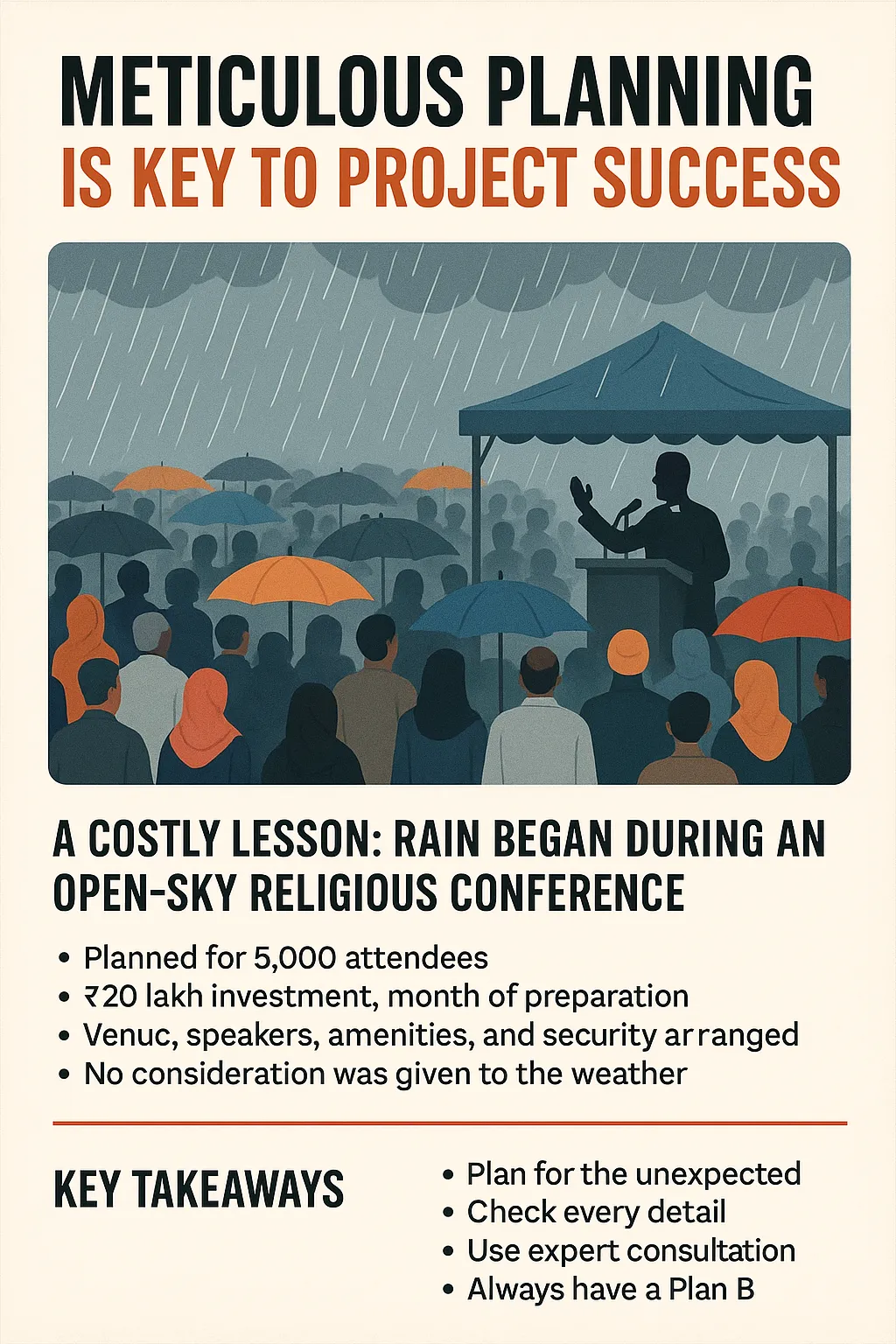A grand religious conference was planned with high expectations, an investment of ₹20 lakh, and the involvement of nearly 100 individuals. Every detail seemed accounted for—except one. This case study explores how overlooking weather planning led to the collapse of a well-funded event.
Planning in Detail
The team executed various aspects of the event with dedication and structure:
- Venue: A 50-acre open field was selected.
- Speakers: Top religious speakers were contacted and paid in advance.
- Logistics: Parking, access paths, and separate areas for ladies were arranged.
- Security: Police were informed, and local political leaders were invited.
- Amenities: Drinking water, food stalls, and crowd facilities were prepared.
Despite all this, no one reviewed the weather forecast or made provisions for rain.
The Turning Point
As the event began, unexpected rain disrupted everything. Without any weatherproof shelter in the open venue, the arrangements failed. Thousands of attendees scattered, infrastructure was damaged, and the ₹20 lakh investment was wasted.
Key Mistake: No Risk Management
This failure can be attributed to one major flaw: lack of contingency planning.
- No weather forecasting or seasonal consideration
- No backup venue or rescheduling option
- No emergency protocols for open-air arrangements
Lessons Learned
- Always assess weather conditions and prepare alternate options.
- Include risk management experts in planning committees.
- Prepare Plan B and C for outdoor events, especially large ones.
- Don't overlook any detail, no matter how small it may seem.
Conclusion
This real-world failure teaches a hard lesson: Project success lies not just in effort and investment, but in foresight and planning for the unexpected. In event planning—or any major project—no detail is too small to be ignored.
